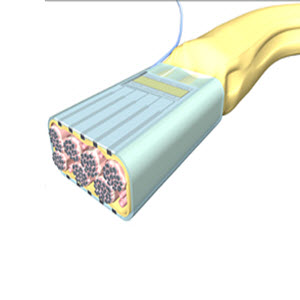Tech in Action: Electronic Advances Enable Advanced Prosthetic Control
Tech in Action: Electronic Advances Enable Advanced Prosthetic Control
In his Connector Supplier article on government’s role in the electronics industry’s research and development initiatives, John MacWilliams notes the evolution and achievements of the Defense Advanced Research Projects Agency (DARPA), which focuses on  projects for defense sciences, information innovation, microsystems technology, strategic technology, tactical technology, and small business initiatives that include SBIR and STTR Innovation Research program funding. Since 2000, more than 2,000 US military service members have suffered amputated limbs. DARPA’s breakthrough research has advanced prosthetic limbs controlled by brain interfaces for quadriplegics, but practical applications of brain interfaces for amputees are still in the future. Nerve and muscle interfaces, however, will allow amputees to control advanced prosthetics in the near term, and recent DARPA demonstrations may give Wounded Warriors hope that they can soon take advantage of these breakthroughs.
projects for defense sciences, information innovation, microsystems technology, strategic technology, tactical technology, and small business initiatives that include SBIR and STTR Innovation Research program funding. Since 2000, more than 2,000 US military service members have suffered amputated limbs. DARPA’s breakthrough research has advanced prosthetic limbs controlled by brain interfaces for quadriplegics, but practical applications of brain interfaces for amputees are still in the future. Nerve and muscle interfaces, however, will allow amputees to control advanced prosthetics in the near term, and recent DARPA demonstrations may give Wounded Warriors hope that they can soon take advantage of these breakthroughs.
DARPA’s Reliable Neural-Interface Technology (RE-NET) program researched the long-term viability of brain interfaces and continues research to develop high-performance, reliable peripheral interfaces. These new peripheral interfaces use signals from nerves or muscles to both control prosthetics and to provide direct sensory feedback. Ongoing clinical trials present compelling examples of both interface types.
“Although the current generation of brain, or cortical, interfaces have been used to control many degrees of freedom in an advanced prosthesis, researchers are still working on improving their long-term viability and performance,” said Jack Judy, DARPA program manager. “The novel peripheral interfaces developed under RE-NET are approaching the level of control demonstrated by cortical interfaces and have better biotic and abiotic performance and reliability. Because implanting them is a lower risk and less invasive procedure, peripheral interfaces offer greater potential than penetrating cortical electrodes for near-term treatment of amputees. RE-NET program advances are already being made available to injured warfighters in clinical settings.”
DARPA research and development of neural prostheses based on stimulation, has led to clinically reliable, commonplace, and publicly accepted products, such as cochlear implants, that have restored lost function to a large number of patients. Although prostheses based on recording neural activity hold great promise and have high relevance to the Department of Defense (DoD), there are two fundamental and well-known obstacles that are preventing their successful transition to clinical use. Both obstacles deal with reliability. First, miniature and portable neural-machine interfaces cannot reliably obtain accurate information from neural tissue over a period of decades. Second, prosthesis systems cannot reliably use measured signals to control the prostheses with high speed and resolution.
DARPA is interested in addressing the specific fundamental challenges preventing clinical deployment of Reliable Neural-Interface Technology (RE-NET), facilitating its potential to enhance the recovery of injured armed services members and assist them in returning to active duty. Program developments will impact the broad community of patients with medical amputations, spinal cord injuries, and neurological diseases.
A team of researchers at the Rehabilitation Institute of Chicago (RIC) demonstrated a type of peripheral interface called targeted muscle re-innervation (TMR). By rewiring nerves from amputated limbs, new interfaces allow for prosthetic control with existing muscles. Former Army Staff Sgt. Glen Lehman, injured in Iraq, recently demonstrated improved TMR technology. Below Lehman demonstrates simultaneous joint control of a prosthetic arm made possible by support from the RE-NET program.
Researchers at Case Western Reserve University used a flat interface nerve electrode (FINE) to demonstrate direct sensory feedback. By interfacing with residual nerves in the patient’s partial limb, some sense of touch by the fingers is restored. Other existing prosthetic limb control systems rely solely on visual feedback. Unlike visual feedback, direct sensory feedback allows patients to move a hand without keeping their eyes on it, enabling simple tasks, such as rummaging through a bag for small items, an action not possible with today’s prosthetics.
The Case Western Reserve University video shows how direct sensory feedback makes some tasks easier. Case Western also received funding from the Department of Veterans Affairs, Veterans Health Administration, Office of Research and Development, Rehabilitation Research and Development Service at the Louis Stokes Cleveland Veterans Affairs Medical Center. The FINE is one of many different types of nerve interfaces developed under the RE-NET program.
“With the RE-NET program, DARPA took on the mission of giving our wounded vets increased control of advanced prosthetics,” added Judy. “TMR is already being used by numerous amputees at military hospitals. As the RE-NET program continues, we expect that the limb-control and sensory-feedback capabilities of peripheral-interface technologies will increase and that they will become even more widely available in the future.”
DARPA’s current efforts with peripheral interfaces are scheduled to continue up to 2016.
- Electric Vehicles Move into the Mainstream with New EV Battery Technologies - September 7, 2021
- The Dynamic Server Market Reflects Ongoing Innovation in Computing - June 1, 2021
- The Electronics Industry Starts to Ease Out of China - November 3, 2020

